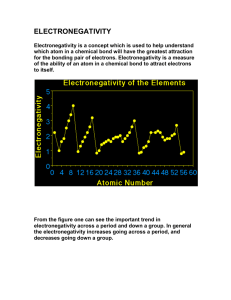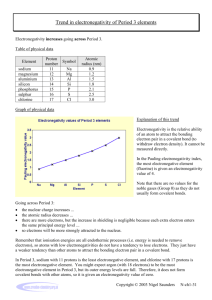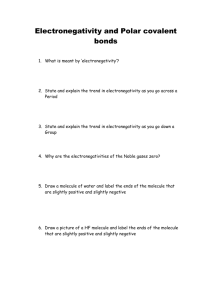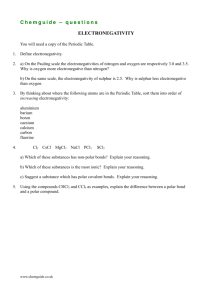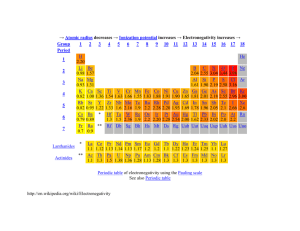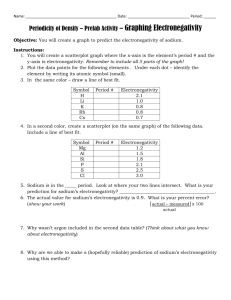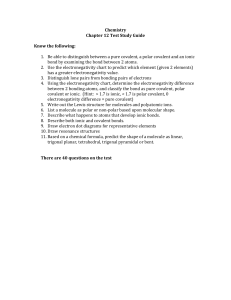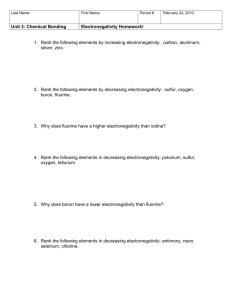Trend in electronegativity of Group 2 elements
advertisement
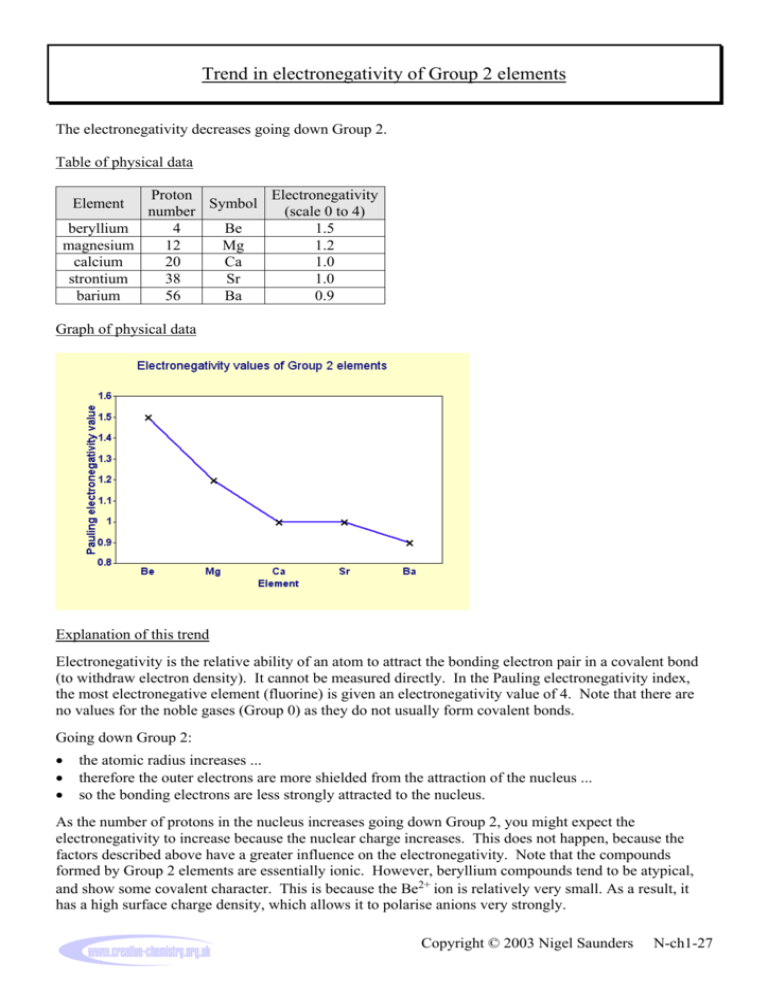
Trend in electronegativity of Group 2 elements The electronegativity decreases going down Group 2. Table of physical data Proton Electronegativity Symbol number (scale 0 to 4) beryllium 4 Be 1.5 magnesium 12 Mg 1.2 calcium 20 Ca 1.0 strontium 38 Sr 1.0 barium 56 Ba 0.9 Element Graph of physical data Explanation of this trend Electronegativity is the relative ability of an atom to attract the bonding electron pair in a covalent bond (to withdraw electron density). It cannot be measured directly. In the Pauling electronegativity index, the most electronegative element (fluorine) is given an electronegativity value of 4. Note that there are no values for the noble gases (Group 0) as they do not usually form covalent bonds. Going down Group 2: • • • the atomic radius increases ... therefore the outer electrons are more shielded from the attraction of the nucleus ... so the bonding electrons are less strongly attracted to the nucleus. As the number of protons in the nucleus increases going down Group 2, you might expect the electronegativity to increase because the nuclear charge increases. This does not happen, because the factors described above have a greater influence on the electronegativity. Note that the compounds formed by Group 2 elements are essentially ionic. However, beryllium compounds tend to be atypical, and show some covalent character. This is because the Be2+ ion is relatively very small. As a result, it has a high surface charge density, which allows it to polarise anions very strongly. Copyright © 2003 Nigel Saunders N-ch1-27
